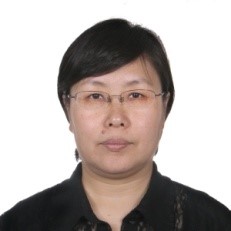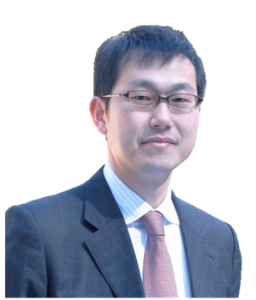Plenary Speakers

Cities and Circularity: Towards Global Carbon Neutrality and Sustainability
Dato’ Seri Maimunah Mohd Sharif
Under-Secretary-General of the United Nations and Executive Director, UN-Habitat
Speaker Profile
Ms. Maimunah Mohd Sharif (Malaysia) is the Executive Director of the United Nations Human Settlements Programme (UN-Habitat), appointed at the level of Under-Secretary-General by the Secretary-General, following an election by the General Assembly on 22 December 2017. She succeeds Dr. Joan Clos of Spain.
As the Executive Director of UN-Habitat, Ms. Sharif has focused on reforming and rejuvenating the agency, mobilizing for internal and external support for the organization’s restructuring and new Strategic Plan 2020–2023. Key initiatives undertaken by Ms. Sharif as the Executive Director of UN-Habitat include the adoption of the General Assembly Resolution 73/539 after 14 years of negotiation, which established a new governance structure with universal membership, governed by the UN-Habitat Assembly.
Prior to this appointment, Ms. Sharif was the Mayor of the City Council of Penang Island, Malaysia. In 2011, she was the first woman to be appointed President of the Municipal Council of Seberang Perai. As mayor of a local authority, she led the Municipal Council of Seberang Perai to achieve its vision of a “cleaner, greener, safer and healthier place to work, live, invest and play.” Ms. Sharif began her career as a Town Planner at the Municipal Council of Penang Island in 1985. In 2003, she was promoted to Director of Planning and Development, a position she held until November 2009.
Born in Kuala Pilah, Negeri Sembilan, Malaysia, on 26 August 1961, Ms. Sharif holds a Bachelor of Science with Honours in Town Planning Studies from the University of Wales Institute of Science and Technology, UK and a Master of Science in Planning Studies from the Malaysia Science University.

Impact of E-transport Development on GHG and Harmful Pollutants
Prof Jiří Jaromír Klemeš
Brno University of Technology, Czech Republic
Talk Synopsis
The current development and planning in many parts of the world, such as China, the EU, and the US, demonstrate a firm commitment to move to e-transport. The general opinion is that this would considerably reduce the emissions, both GHG and the health-damaging emissions (NOx, SO2) and particles, e.g. PM, including micro and nano plastics. Although the outcomes can be more or less favourable, a comprehensive assessment is needed to steer the development in the right directions. They can be various variables in the overall objective function to minimise the environmental footprints, also at the running phase of electric vehicles. They include the emission content of the electric power, energy distribution and storage. E.g. regenerative braking could reduce particulate brake pollution. The e-transport in the future can use batteries and/or hydrogen as the energy carrier and storage. Related important business and political issues connected with the move from fossil fuels, as oil and gas, but also from biofuels, can get serious impact on countries economy, both in a positive and negative way. With strong preferences to use mass-scale renewable power electricity sources, it can be more favoured wind, solar, geothermal and hydro over biomass, also based on minimising environmental footprints.
Speaker Profile
Prof Klemeš serves as the Head of “Sustainable Process Integration Laboratory – SPIL”, NETME Centre, Faculty of Mechanical Engineering, Brno University of Technology – VUT Brno, Czech Republic and Emeritus Professor at “Centre for Process Systems Engineering and Sustainability”, Pázmány Péter Catholic University, Budapest, Hungary.
Previously the Project Director, Senior Project Officer and Hon Reader at Department of Process Integration at UMIST, The University of Manchester and University of Edinburgh, UK. Founder and a long term Head of the Centre for Process Integration and Intensification – CPI2, University of Pannonia, Veszprém, Hungary. Awarded by the EC with Marie Curies Chair of Excellence (EXC). Track record of managing and coordinating 91 major EC, NATO and UK Know-How projects. Research funding attracted over 21 M€.
Co-Editor-in-Chief of Journal of Cleaner Production. The founder and President for 20 y of PRES (Process Integration for Energy Saving and Pollution Reduction) conferences. Chairperson of CAPE Working Party of EFCE, a member of WP on Process Intensification and of the EFCE Sustainability platform. He authored and co-authored nearly 400 papers, h-index reaching 40. A number of books published by Elsevier, Woodhead, McGraw-Hill; Ashgate Publishing Cambridge; Springer; WILEY-VCH; Taylor & Francis).
Several times Distinguished Visiting Professor at Universiti Teknologi Malaysia and University Technology Petronas, Malayisa; Xi’an Jiaotong University; South China University of Technology, Guangzhou and Tianjin University in China; University of Maribor, Slovenia; Brno University of Technology and the Russian Mendeleev University of Chemical Technology, Moscow. Doctor Honoris Causa of Kharkiv National University “Kharkiv Polytechnic Institute” in Ukraine, the University of Maribor in Slovenia, University POLITEHNICA Bucharest, Romania. “Honorary Doctor of Engineering Universiti Teknologi Malaysia”. Awarded with “Honorary Membership of Czech Society of Chemical Engineering”, “European Federation of Chemical Engineering (EFCE) Life-Time Achievements Award” and “Pro Universitaire Pannonica” Gold Medal.

GHG Reduction Pathway in Agricultural Sector towards Carbon Neutrality in China
Prof Li Yu’e
Chinese Academy of Agricultural Sciences, China
Talk Synopsis
Agriculture is one of the significant greenhouse gas (GHG) emission sources. Appropriate cropland management also can sequestrate carbon into the soil. Mitigating GHG emissions and enhancing carbon sequestration in the soil is vital to realize carbon neutrality by 2060 in China. This study projected GHG emissions from cropland based on the projection of population, demand for food, planting areas of crops, vegetables and fruit trees, livestock population, the chemical fertilizers consumption, organic fertilizers application and the amount of N in straw returning to the cropland. Seven mitigation options were involved in this study, including reduced fertilization rate, application of enhanced efficiency fertilizers, deep application of chemical fertilizers, fertigation, control of nitrogen surplus, application of organic fertilizer and straw returning to cropland. N2O emission factors were derived for main crops and nutrient management practices using a meta-analysis approach and based on the collected N2O emission-related studies in China. Using IPCC methodology and the country-specific N2O emission factors derived using meta-analysis, the N2O and CH4 emissions under different mitigation options were calculated. The empirical formula was used to calculate the effects of straw returning and applying organic fertilizer on soil carbon storage. The calculation of the marginal abatement cost curve is based on the implementation area, abatement per unit area, and the incremental net cost (i.e., costs minus benefits) of each mitigation option compared to the business as usual (BAU) scenario. There is a significant mitigation potential in nutrient management under negative cost..
Speaker Profile
As the full professor in the Institute of Environment and Sustainable Development in Agriculture, Chinese Academy of Agricultural Sciences, Prof Li has been devoted to climate change research for more than two decades. Her researches focus on GHG emissions/removals in the agricultural sector, identification and development of best management practices (BMP) for both GHG emission reduction and adaptation to climate change, as well development of accounting and monitoring methodologies for carbon trading in agriculture.

Localizing Climate and Sustainable Development Goals
Dr Junichi Fujino
National Institute for Environmental Studies (NIES), Japan
Speaker Profile
Dr Fujino joined IGES as Principal Researcher and Senior Coordinator for Urban Taskforce, IGES since this April 2016 and fully moved to IGES on April 2019. Before moving to IGES, he served as Senior Researcher, NIES and one of the main members to develop the Asia-Pacific Integrated Model (AIM) to assess policy options for stabilizing the global climate. He was the lead author of IPCC Special Report on Renewable Energy Sources and Climate Change Mitigation (SRREN) since 2000. He has contributed to policy process such as a member of the joint committee on Japanese INDC (Intended Nationally Determined Contributions) under MOEJ and METI, as well as an advisory committee member of “FutureCity” initiatives (Cabinet Office, Japan). He also engaged in Iitate village (where has suffered severe damage by nuclear accidents regarding the Great East Japan Earthquake, in Fukushima) revitalization planning committee since August 2011. He received his B.S/M.S/Ph.D. in Electrical Engineering from the University of Tokyo. He has joined UNFCCC/COP process as NGO since COP11 and nowadays visited many Asian countries/cities to make a low/zero-carbon society happens. He is a senior advisor to ICLEI Japan.
Get in Touch
UTM Low Carbon Asia Research,
Universiti Teknologi Malaysia,
81310 Johor Bahru, Johor, MALAYSIA
secretariat@iclcaconf.com
